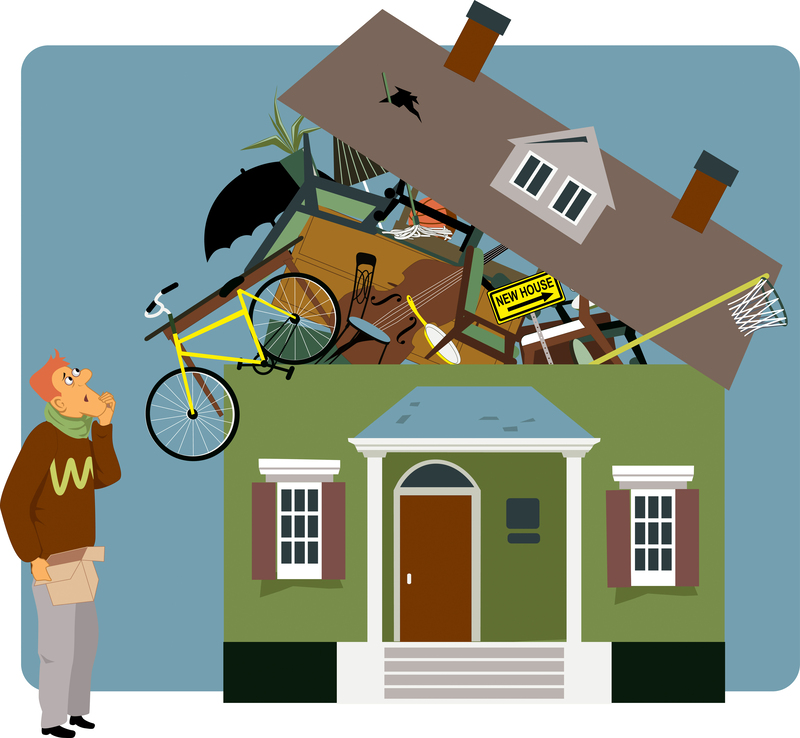The Ultimate Guide to Keeping Your Unused Freezer in Top Condition
Is your freezer sitting dormant in the garage, basement, or outbuilding? Maybe you upgraded appliances, live in a seasonal home, or have an extra upright or chest freezer for future needs. Regardless of why it's not in use, properly maintaining an unused freezer is essential to preserve its lifespan, prevent odors, stop mold growth, and ensure it's ready for action when you need it. This comprehensive guide covers everything you need to know about caring for a freezer that isn't currently storing food, from cleaning routines to energy use, safety tips, and smart storage ideas.
Why It's Important to Maintain Your Unused Freezer
- Prevents damage: Idle freezers are prone to internal wear, component deterioration, and water leaks.
- Stops odors and mold: Left unattended, unused freezers can become breeding grounds for bacteria and mold.
- Maintains efficiency: Regular care ensures your unused freezer starts up without issues when needed.
- Extends lifespan: Proactive care reduces the risk of costly repairs or premature replacement.
- Promotes safety: Prevents hazards like electrical faults, pests, and moisture accumulation.

Step-by-Step Guide: How to Care for an Unused Freezer
1. Thoroughly Clean Your Freezer Before Storage
Before switching your freezer to inactive status, start with a deep clean. This step is vital for keeping your unused freezer in top condition.
- Unplug the freezer for safety and to prevent accidental startup.
- Empty all contents: Remove food, shelves, bins, and trays.
- Clean interior surfaces with a mild soap and warm water solution or a gentle vinegar mix to remove spills and grime.
- Defrost any ice build-up: If necessary, let the freezer sit with the door open until all ice melts. Place towels to catch excess water.
- Dry thoroughly: Moisture left inside can foster mold growth. Wipe every surface, including gasket seals, with a soft, dry cloth.
- Sanitize: Use a baking soda paste or diluted bleach solution on stubborn stains or to eliminate nascent mold.
2. Eliminate and Prevent Unwanted Odors
Unused freezers often develop musty smells. To keep your freezer fresh and odor-free:
- Place an open box of baking soda or a bowl of dried coffee grounds inside for natural odor absorption.
- For persistent smells, wipe the cabinet with a solution of one tablespoon vanilla extract or lemon juice mixed with one quart of water.
- Charcoal briquettes or commercial odor absorbers also work well for tough odors.
3. Store Your Freezer With the Door Ajar
A closed appliance creates a damp, airless environment perfect for bacteria, moisture, and unwanted smells.
- Always store your unused freezer with the door slightly open--about 1/2 -1 inch is sufficient.
- Secure the door with a gentle prop, towel, or manufactured door spacer to prevent it from swinging shut.
- Remove or tape closed the door latch so that the door cannot lock itself shut.
Tip: This step is especially important for chest freezers, which seal particularly tight and can breed hidden problems.
4. Choose: Leave Your Freezer Plugged In or Unplugged?
- Unplug if you plan long-term disuse (weeks to months):
- Prevents phantom energy use and accidental starts.
- Protects from power surges during storms or electrical outages.
- Prevents internal light bulbs or fans from running needlessly.
- Leave plugged in if short-term (a week or two) or for reliability:
- Keep running only if you check it regularly and want it instantly ready for use.
- Set the thermostat to the lowest, most energy-saving setting.
Important Safety Note: If you unplug the freezer, be absolutely certain it is empty and dry, with the door ajar. This prevents mildew, corrosion, or dangerous gases from accumulating inside an airtight space.
5. Check and Maintain Your Freezer Every Few Months
Even when not in use, a well-preserved freezer requires a periodic check-up:
- Inspect the gasket seals for cracks or mold. Gaskets ensure a tight, efficient seal when back in use.
- Wipe down interior/exterior surfaces to clear dust, insects, or cobwebs.
- Vacuum the coils or compressor (accessible on many freezers) to prevent dust buildup, which can cause overheating.
- Check for evidence of rodents or bugs, especially if the freezer is in a shed or garage.
- Ensure the freezer is still level. Uneven placement can warp the cabinet frame or cause door issues over time.
- Re-fresh baking soda or odor removers as needed.
6. Store in a Safe Environment
The location of your unused freezer matters. Follow these tips:
- Keep out of direct sunlight and away from heaters or hot water pipes to avoid warping or component stress.
- Maintain a dry, well-ventilated area. Moist basements can lead to rust or mold growth on both the interior and exterior.
- Elevate on blocks or pallets if your storage area is prone to flooding.
- Never stack heavy items on top to protect the lid and hinges.
7. Prevent Pests and Ensure Safety
- Check regularly for signs of mice or insects. Deterring pests protects wiring, insulation, and mechanical parts.
- Secure the unit: If you have small children, disable the latch or lock to eliminate entrapment risks.
- Place away from clutter, both for safety and easier inspection access.
Quick Reference: Unused Freezer Maintenance Checklist
- Defrost, thoroughly clean, and dry before storage
- Neutralize odors with baking soda or alternatives
- Store with door slightly open and door latch disabled
- Unplug for extended storage (if safe to do so)
- Protect from excessive heat, cold, and moisture
- Elevate from damp floors or flooding risk areas
- Regularly inspect, clean, and deodorize
- Ensure safety for children and pets
- Do NOT store items inside a closed, unplugged freezer
- Keep documentation and instruction manual handy for future reference
Common Problems with Unused Freezers (& How to Solve Them)
Odor and Mold Buildup
Problem: Musty or chemical odors when you open the door after months of inactivity.
Solution:
- Deep clean with baking soda and vinegar, followed by thorough drying.
- Allow sunlight (if possible) to help kill persistent bacteria--just avoid prolonged outdoor exposure that could damage the outer shell.
- Replace gaskets if odor persists--they may be harboring hidden mold.
Rust or Corrosion
Problem: Spots of rust on interior, exterior, or around seals.
Solution:
- Sand lightly and treat with appliance-safe touch-up paint after cleaning and drying the area.
- Ensure you're storing the freezer in a dry location and check for water leaks or drips near pipes or air conditioners.
- Cover with a breathable appliance cover to shield from dust and humidity.
Difficulty Restarting or Poor Performance
Problem: When you plug your freezer back in, it doesn't start or chills poorly.
Solution:
- Examine the power cord for frays or breakage, especially if the freezer was moved.
- Clean dust from compressor coils before restarting the unit.
- Check thermostat and control panel for spider webs, bugs, or corrosion.
- If the problem persists, consult your appliance's manual or call a certified technician before attempting repairs.
What Can You Use an Unplugged Freezer For?
When a freezer isn't running, it can still be a handyman's dream for storage. Just be sure the door stays ajar and no food is kept inside. Here are some creative, safe ideas:
- Tool chest: The thick insulation and secure lid make a safe, rust-resistant place for hand tools.
- Pet food container storage (if dry, not airtight inside).
- Off-season sports gear, like baseball mitts, balls, or even skates.
- Pest-proof storage for camping supplies or emergency kits.
- Document safe: Add silica gel desiccants to protect from moisture.
Remember, never store anything that could pose a safety risk or attract pests inside a closed, unplugged freezer.
Should You Reuse, Donate, or Recycle Your Old Freezer?
Before committing to long-term storage, consider the pros and cons of keeping your spare freezer:
- Reuse: Ideal for surges in food storage, gardening, or seasonal hosting needs.
- Donation: Many organizations refurbish and distribute working freezers to people in need--check with local charities.
- Recycle: If your freezer is energy-inefficient or showing signs of failing components, recycling may be best for the environment (and your energy bills).
How to Prepare Your Freezer for Future Use
When you're ready to start using your unused freezer again, follow these steps for best results:
- Clean again, especially if it's been out of commission for many months.
- Inspect mechanical parts (thermostat, drain, power cord) and test door gaskets for a snug seal.
- Plug in and allow to run empty for at least 6-8 hours to test temperature stability and listen for unusual noises.
- Reorganize shelves and bins, ensuring everything is dry and free of debris before restocking with food.
- Adjust temperature settings for optimal performance (-18?C or 0?F for long-term food storage).
A reviving cycle protects your investment and ensures that the freezer can safely store food without risk of contamination or spoilage.

Frequently Asked Questions About Unused Freezers
Is it better to leave a freezer running or unplugged when not in use?
For most users, unplugging a freezer you won't use for a month or more saves energy and reduces wear. Always empty and clean thoroughly, and store with the door open. For very short absences, you might leave it running on the lowest setting, but regular monitoring is critical.
How often should I inspect my idle freezer?
*Every 1-3 months* is ideal--look for dust, moisture, or signs of animals or insects.
Can I put items inside my closed, unplugged freezer for storage?
No, this is not recommended because a closed, airtight freezer can trap odors and moisture or even create dangerous conditions if a child or pet gets inside. Always store with the door propped open.
What cleaning products are safe for freezers?
Mild soaps, vinegar solutions, and baking soda are safest. Avoid harsh abrasives or strong chemicals that can leave residues or damage seals and plastic.
Conclusion: Keeping Your Unused Freezer in Prime Condition Pays Off
Whether you're saving an extra freezer for future use, keeping a backup for emergencies, or simply haven't needed it yet, a little preventative care can save you time, energy, and money down the line. Regular cleaning, safe storage, odor prevention, and periodic inspection are all key to keeping your unused freezer in the best shape possible. This way, when you do need it, your freezer will be ready to keep your food cold and safe for years to come.
Looking for more appliance tips? Explore our guides on refrigerator care, freezer organization, and sustainable appliance disposal here.



